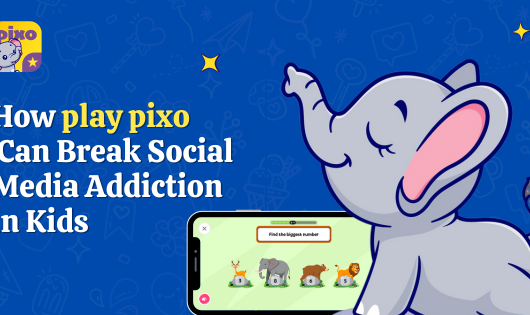Lisa Shares Her Story: Overcoming Lily’s Behavioural Issues – A Parent’s Perspective
Let’s Talk About Behaviour – The Real Stuff
Parenting is full of joyous moments, right? But, let’s be real—sometimes it’s a wild ride. I’m Lisa, and I’ve had my fair share of those wild moments with my little whirlwind, Lily. When we’re up to our elbows in crayons and snack crumbs, and then, out of nowhere, a tantrum rolls in like a mini tornado—it’s a bit much. I’ve been there, wondering what to do when my sweet, angel-faced child suddenly turns into a tiny, adorable hurricane.
Let me share my story with you. It’s relatable, real, and, best of all—it has a happy ending!

Lily’s Story – From Cheerful to Challenging
Lily was the apple of my eye—cheerful, playful, full of wonder. But as she grew, so did some rather unexpected behavioral challenges. It started small: refusing to listen, tantrums when it was time to leave the playground, and the occasional “No!” yelled with such dramatic flair that I wondered if Broadway might be in her future.
But then, the behavior escalated. Lily began to display aggressive behavior when she didn’t get her way. Pushing other kids on the playground, throwing toys, and one day, she even smacked her dad because she wasn’t allowed to have another snack (cue the facepalm from all parents who know exactly what that’s like).
We were at our wits’ end, googling “child behavior problems” late into the night. We tried everything—stern voices, timeouts, bribery with snacks—but nothing worked. Every tip we found felt like putting a band-aid on a bigger issue.
Finding Our Way: Understanding Lily’s Behavioral Challenges
Lily’s story is one many parents can relate to. Whether your child is a tornado of tantrums or is starting to show signs of aggressive behavior, it’s easy to feel lost. So, what exactly are the most common child behavior problems?
Well, from our own experience and what I’ve heard from other parents, the biggies include:
- Tantrums: Classic, but oh-so-frustrating.
- Defiance: We all dread those “you’re not the boss of me!” moments.
- Aggression: Hitting, biting, or kicking—tough to handle but common.
- Inability to follow instructions: Think of bedtime refusal that turns into a 45-minute negotiation.
- Impulsiveness: That “run-before-they-think” attitude we all know too well.
These behaviors are common but can feel overwhelming when they hit full force. Parenting isn’t about being perfect—it’s about learning together and finding what works for your child.

Turning the Tide: What Finally Worked for Lily
We weren’t just looking for quick fixes—we wanted child behavior management tools that could make a lasting difference. After diving deep into every forum, article, and tip (I see you, sleepless parenting nights), I came across something that clicked: positive discipline techniques for children.
Here’s how it changed everything for us:
Understanding the Root Cause
First, I stopped seeing Lily’s behavior as “bad.” Instead of punishment, I asked myself, What’s triggering this behavior? Is she tired? Overstimulated? Hungry? Frustrated? I started tackling the underlying causes of her outbursts, which often boiled down to missed nap times or an overwhelming schedule.
Keeping Calm Amidst the Storm
The key to dealing with aggressive behavior in children is staying calm. If Lily threw a toy or hit someone, I calmly removed her from the situation and explained why it wasn’t okay. There was no yelling and no drama (even though I felt like it). This didn’t change overnight, but Lily slowly began to mirror our calm behavior.
Logical Consequences that Make Sense
One of the biggest takeaways from our journey? Not all consequences are created equal. The trick was to give consequences that were directly related to the behavior. For example, if Lily threw a toy, she lost the privilege of playing with that toy for the rest of the day. These consequences were clear and logical, not just random punishments thrown into the mix.
Celebrating the Small Wins
It’s easy to focus on what kids are doing wrong, right? But I found that when I tried to praise Lily’s positive behavior—like when she shared with a friend or used her words instead of her hands—her “good” moments started multiplying. Positive reinforcement worked wonders for Lily, becoming one of our go-to child behavior improvement tips.
The Flashcard Game Changer: Turning Frustration into Fun
One of the most effective techniques I used was positive reinforcement. Every time Lily displayed good behavior, I praised or rewarded her with something small, like an extra bedtime story or some playtime with her favorite toys. And here’s a little trick that made a huge difference: flashcards!
Seeing the Change – Lily’s Transformation
So, where are we now? Let’s just say Lily’s Broadway-worthy tantrums have been replaced with much more manageable moments of frustration (hey, no one’s perfect!). We’ve seen a major improvement in her behavior by focusing on these positive techniques and sticking with them, even when it is tough.
I’ve learned that dealing with child behavior problems isn’t about quick fixes or constant discipline—it’s about understanding, patience, and guiding your child through their feelings and frustrations in a way that builds them up rather than tears them down.
To All the Parents in the Same Boat—We’ve Got This!
If you’re dealing with aggressive behavior in children, defiance, or just those head-scratching moments of “why is this happening?!”, remember you’re not alone. Lily’s story is just one of many, and our community is filled with parents navigating the same ups and downs.
We’re all in this together, swapping tips, sharing stories, and reminding each other that parenting is as much about growing as guiding our little ones. And hey, on the tough days, I’m here to remind you—it will improve.
So, what’s your experience? Join the discussion in our community forum and share what’s worked (or hasn’t worked) with your little hurricanes. Let’s learn, laugh, and grow together!
(P.S. You’re doing an amazing job, even on the messy days. )









2 Comments